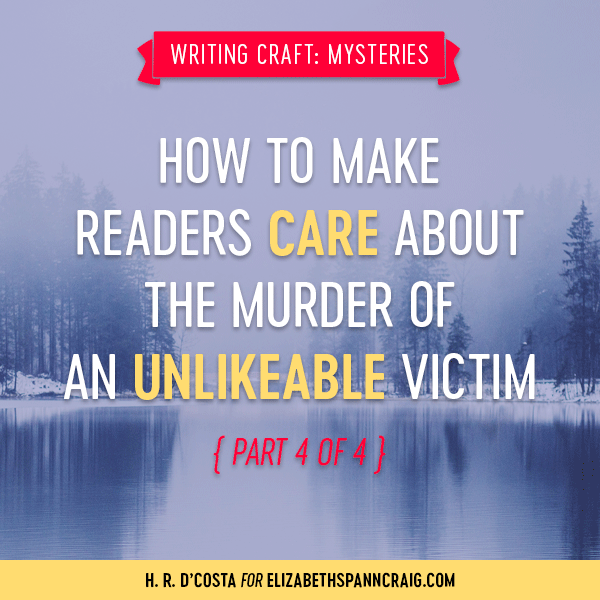
by H.R. D’Costa, @scribesworld
Wow.
We’ve covered a lot of ground in this four-part blog series on how to handle the stakes in a cozy mystery. (By the way, although the illustrative examples are cozy-centric, many of the tips in this series can be applied to mysteries with a harder edge.)
Today, we’re wrapping things up and putting all the tips from Parts 1–3 of the blog series into action. For this post to make the most sense, you should really read the previous ones (if you haven’t already).
If you need to catch up, check out this list of all the posts in this blog series, with convenient links to Parts 1, 2, and 3:
- In Part 1, we covered methods to bolster the stakes that emphasize the sleuth.
- In Part 2, we covered methods to bolster the stakes that emphasize other storytelling elements that readers care about.
- In Part 3, we discussed considerations to take into account when applying these story stake tips to cozy mysteries in a series.
- In Part 4, you’ll see these considerations in action when I share a sample lineup of stakes for a hypothetical cozy-mystery series. (You’re reading Part 4 right now.)

All right. You’re properly oriented. You know that it’s a smart idea to map out the stakes in a cozy-mystery series in advance. That’s because doing so will help you avoid escalation problems in the long run.
When mapping out your stakes, there are three operating principles to keep in mind.
- Ideally, the novels in your series will be more emotionally intense, as your series goes along.
- However, the first book in your series should be engaging enough to lure readers into your series.
- Series loyalty can carry readers through books that might not be as exciting as previous books in a series.
With these principles in hand, you should be able to figure out how to maintain escalation across the books in your cozy-mystery series.
However, before you do this on your own, you might like to see these principles in action.
That’s why I’ve created a sample lineup of stakes to use over the course of a five-book cozy-mystery series. This lineup will give you a sense of the reasoning process you might go through when you map out the stakes in your own series.
Bear in mind, this lineup shouldn’t be treated as a cast-iron mold. It’s there to provide guidance on some considerations that are good to take into account when planning your own cozy-mystery series.
One more thing: unless otherwise indicated, the victim in these plots can be likeable or unlikeable.
In the case of an unlikeable victim, an extra set of stakes (or some other source) supplies the reason for readers to invest in the plot. Using these techniques (as described in Parts 1 and 2 of this blog series) is a must.
In the case of a likeable victim, it’s optional. You don’t need to compensate for the victim’s unlikeability—but, by applying the same techniques, you’ll enhance your readers’ experience.
Okay, here’s the sample lineup:Continue reading






